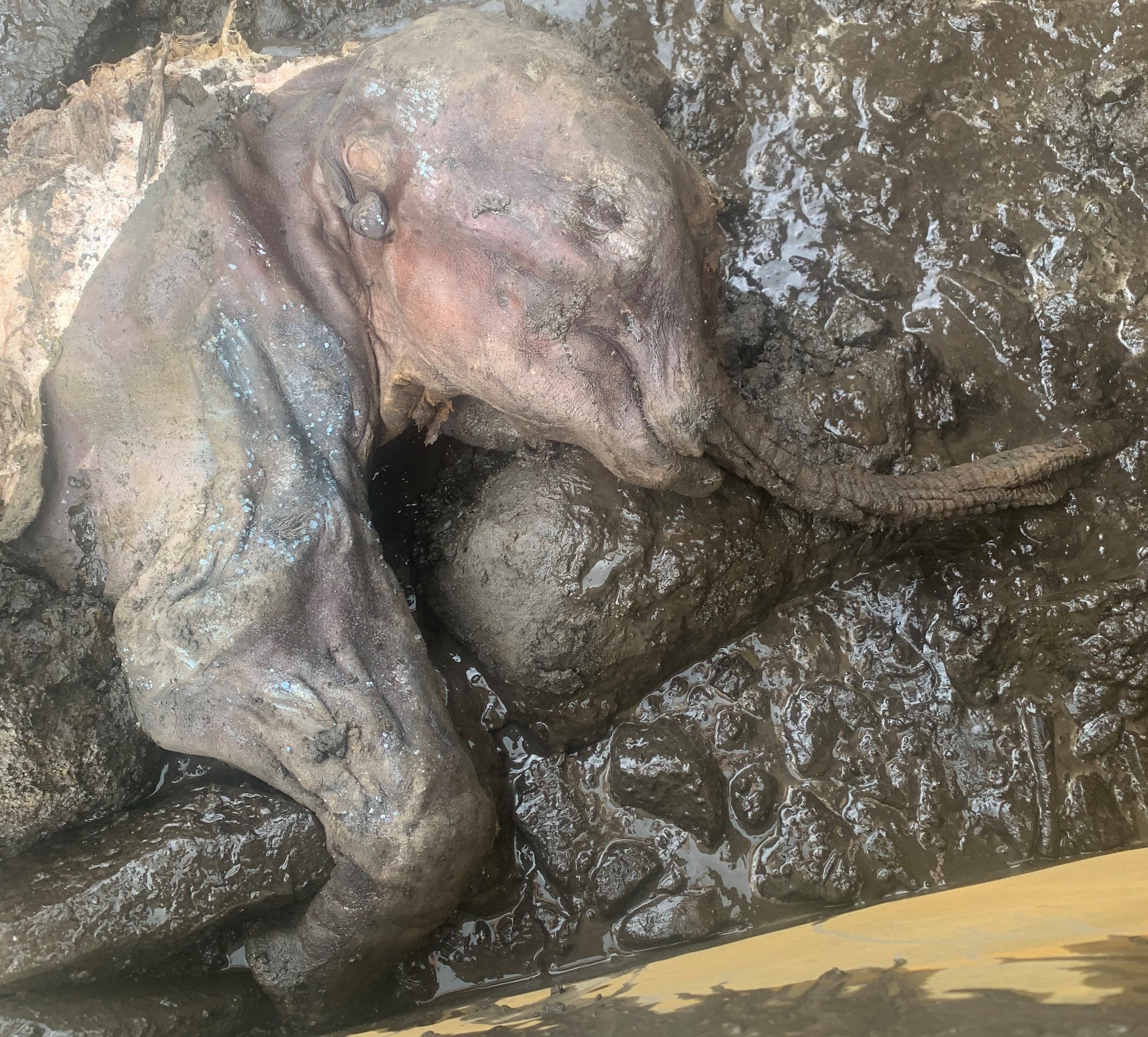30,000 year-old mummified baby mammoth found by Canadian gold miner
Experts say it is the most complete mummified mammoth found in North America.

A near-perfectly mummified, 30,000 year-old baby woolly mammoth has been unearthed from Canadian permafrost by a miner in the Klondike region's gold fields.
The stunningly preserved baby, which measured just 4.5 feet (1.4 meters) long and has much of its hair and skin intact, was described by officials as "the most complete mummified mammoth found in North America."
As the discovery was made in Eureka Creek, on the land of the Tr'ondëk Hwëch'in First Nation in Canada's Yukon, the animal has been named "Nun cho ga" or "big baby animal" in the Hän language. Analysis suggests that the calf is female and was around one month old at the time of death, putting her at roughly the same biological age as another woolly mammoth calf that was discovered in Siberia in 2007 — the 42,000 year-old infant called "Lyuba."
Related: 200,000-year-old 'mammoth graveyard' found in UK
"As an ice age paleontologist, it has been one of my life long dreams to come face to face with a real woolly mammoth. That dream came true today," Grant Zazula, a paleontologist for the Yukon government's Department of Tourism and Culture, said in a statement. "Nun cho ga is beautiful and one of the most incredible mummified ice age animals ever discovered in the world. I am excited to get to know her more."
The remains were discovered when a mine worker who was digging near a creek in the Klondike gold fields south of Dawson City, felt his front-end loader strike something unexpected. He called his boss over to investigate and the two found the mummified mammoth buried in the mud. All mining work stopped so that two geologists could drive to the location, recover the extinct animal's remains and take samples of the site.

"And the amazing thing is, within an hour of them being there to do the work, the sky opened up, it turned black, lightning started striking and rain started pouring in," Zazula told the Canada Broadcasting Corporation (CBC). "So if she wasn't recovered at that time, she would have been lost in the storm."
Get the world’s most fascinating discoveries delivered straight to your inbox.
This isn't the first time that mummified mammoths have been found by miners in the region. For example, partial remains of a mammoth calf, nicknamed Effie, were discovered at a gold mine in the neighboring U.S. state of Alaska, in 1948. But none of the previous discoveries were so incredibly well preserved.
"It's amazing. It took my breath away when they removed the tarp. We must all treat it with respect," Tr'ondëk Hwëch'in Elder Peggy Kormendy said in the statement.
Woolly mammoths wandered the icy arctic plains of northern Europe, Asia and North America alongside wild horses, cave lions and giant bison, and went extinct as recently as 5,000 years ago, Live Science previously reported. If Nun cho ga had grown to be an adult, she likely would have stood as tall as 13 feet (4 m) at the shoulder and would have sported enormous, curved tusks to ward off her adversaries.
Grass in the infant's stomach suggested that Nun cho ga may have been grazing at the time of her death, and possibly met her demise after straying just a few too many steps beyond her mother's sight, which led to her getting stuck in the mud, becoming engulfed and suffocating. "That event, from getting trapped in the mud to burial was very, very quick," Zazula said.
Earth scientist Dan Shugar, an associate professor at the University of Calgary who worked on the mammoth recovery, wrote on Twitter that unearthing the remains "was the most exciting scientific thing I have ever been part of, bar none," and that the remains had been preserved down to the intestines and individual toe nails.
"This is as a remarkable recovery for our First Nation, and we look forward to collaborating with the Yukon government on the next steps in the process for moving forward with these remains in a way that honours our traditions, culture, and laws," Tr'ondëk Hwëch'in Chief Roberta Joseph said in the statement.
Originally published on Live Science.

Ben Turner is a U.K. based writer and editor at Live Science. He covers physics and astronomy, tech and climate change. He graduated from University College London with a degree in particle physics before training as a journalist. When he's not writing, Ben enjoys reading literature, playing the guitar and embarrassing himself with chess.


